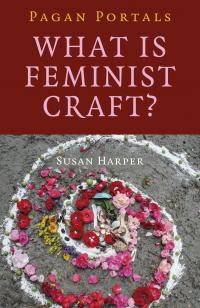
There's an intricate relationship between art (by which I mean all the arts - dance, poetry, et al, not simply painting) and magic. It's beyond the scope of one blog post to delve too deeply into that relationship, given that it has so many aspects, but I'm fairly sure that any readers I may have will see a thread running through many of my posts here.
It's a bit of a truism to say that public perceptions of, and tastes in, art generally lag at least fifty years behind the newest developments. Hence abstraction is more or less accepted nowadays, but conceptual art still has some way to go. Pagans are no exception to that rule. If anything, a lot of Pagans I meet seem to be stuck in a late-Victorian haze when it comes to their artistic tastes. Tate Britain is hosting an exhibition of paintings by Edward Burne-Jones, famous as one of the Pre-Raphaelites, later this year, and I suspect that it's going to be like a convocation of witches...
At any rate, my guess is that performance art is as much a minority interest among Pagans as it is among the general population. This shouldn't be surprising. Performance art is often difficult to interpret, uncomfortable to witness, and frankly it can seem downright weird. Many of the best known performance artists tend to be those whose work engages, sometimes painfully, with the human body. None of this makes it a form of art that's likely to win over sympathetic coverage in the mass media or to appear in your local high street art gallery. After all, you probably wouldn't want it in your house.
But, dear reader, before going any further, I ask you to sit and watch this brief video (and do read the brief text underneath it to get the context) of the famous performance artist Marina Abramovich at work, here: https://www.youtube.com/watch?v=R4lp4w8lNYs
Performance art can be both very simple and profoundly moving.
It can also take on, I think, some of the roles that used to be fulfilled by ritual in the public sphere. It can be cathartic, dramatic and meaningful at a non-rational level to an audience as well as for the performer.
One of the most influential of performance artists, Joan Jonas, has grasped this potential and her work frequently takes the folklore and myth of diverse traditions as the starting points from which to explore contemporary questions around landscape and environment, nature and (particularly female) identity. In Jonas' own words, "Seeing how ritual is performed in other cultures I understood that one is a member of a community. Anyone can take part in actions, movements, events".
 Jonas' work has been the focus of a recent major exhibition at Tate Modern. Wandering the galleries, I've been struck by the ways in which Jonas' installations and performances draw together
modern practices and technology, such as video, with elements from literature, myth and folklore to create something with both ancient and contemporary resonances.
Jonas' work has been the focus of a recent major exhibition at Tate Modern. Wandering the galleries, I've been struck by the ways in which Jonas' installations and performances draw together
modern practices and technology, such as video, with elements from literature, myth and folklore to create something with both ancient and contemporary resonances.
My first encounter with Jonas' art, some years ago and also at Tate Modern, was with the installation to accompany her oral retelling of a story from the Grimm's collection,
The Juniper Tree. The story itself is a savage one, even for the Grimms. It involves child abuse, murder and cannibalism before it turns (in a way quite typical of the
Grimms) to vengeance and redemption. The images in the installation, hung like banners behind and around the performance space, are starkly red-and-white; on some, the paint has been allowed to run
down like spattered blood. It isn't a literal interpretation of a narrative, but rather it's a poetic response to the story. And that's an important differentiation; the power lies in analogy, rather
than in a direct translation or interpretation of the source material. 
I think there's a lesson in this for Pagans and anyone else engaged in working with the magical arts (note my emphasis, there!). We are working in a field where our own unconscious, connection with Otherworld sources, metaphor, renewed imagery, responsiveness and creativity are, or at least should be, our guides and not the strict following of formulae laid down by our forerunners.
Beyond that, it's worth considering more deeply the intersections between our magical arts and the creative arts, and of both with advancing technology and its more "traditional" alternatives; and how the work of Pagans in the consequent space can impact upon and influence a wider community for the better. This is something I find myself returning to, again and again, as a Pagan and an artist. I am far from having complete answers to any of the questions raised by such explorations. But to borrow from older wisdom - it's the journey, the exploration, that matters much more than the destination.
Categories:
0 comments on this article






